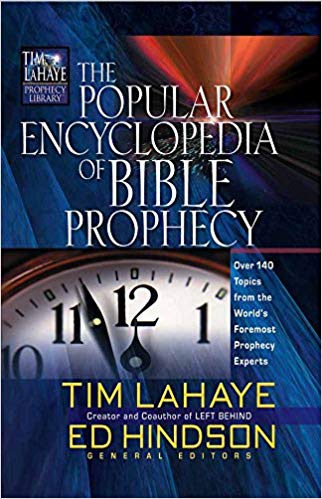AMILLENNIALISM Part I

THE POPULAR ENCYCLOPEDIA OF BIBLE PROPHECY
AMILLENNIALISM Part I
AMILLENNIALISM TEACHES THAT there will be no literal, future 1000-year reign of Christ on earth. Most amillennialists believe that a spiritual form of the kingdom is present now. Systematic amillennialism was the second of the three major eschatological views to develop; it was first taught within the church around the beginning of the fifth century. Amillennialism teaches that there is no rapture. From the ascension of Christ in the first century until His second coming, both good and evil will increase in the world as God’s kingdom parallels Satan’s kingdom. Satan is currently bound, but evil increases. When Jesus Christ returns, the end of the world will occur with a general resurrection and general judgment of all people. This view spiritualized the kingdom prophecies.
AMILLENNIAL SELF-DEFINITION
Floyd E. Hamilton (p. 129) describes amillennialism as the view “that Christ’s millennial kingdom extends from His Resurrection from the tomb to the time of His Second Coming on the clouds at the end of this age.” At no time will Christ reign on the earth in Jerusalem. “Christ’s kingdom ‘is not of this world,’ but He reigns in the hearts of His people on earth. The thousand years are symbolic of the perfect, complete time between the two comings of Christ.”After the second coming of Christ, believers from all of history will enter into heaven for eternity immediately following the final and single judgment of all mankind. Kim Riddlebarger (pp. 31-32) defines amillennialism this way:1. Amillennialism “can also be called ‘present’ or ‘realized’ millennialism.” Riddlebarger sees the “present millennial age manifest in the present reign of Jesus Christ in heaven.” 2. “Amillennialists hold that the promises made to Israel, David, and Abraham in the Old Testament are fulfilled by Jesus Christ and his church during this present age.” 3. “The millennium is the period of time between the two advents of our Lord with the thousand years of Revelation 20 being symbolic of the entire inter-advental age.” 4. “At the first advent of Jesus Christ, Satan was bound by Christ’s victory over him
at Calvary and the empty tomb. The effects of this victory continued because of the presence of the kingdom of God via the preaching of the gospel and as evidenced by Jesus’ miracles. Through the spread of the gospel, Satan is no longer free to deceive the nations.” 5. “Christ is presently reigning in heaven during the entire period between Christ’s first and second coming.” 6. “At the end of the millennial age, Satan is released, a great apostasy breaks out, the general resurrection occurs, Jesus Christ returns in final judgment for all people and he establishes a new heaven and earth.”
MILLENNIALISM AND THE EARLY CHURCH
We have no record of the presence of amillennialism in the earliest church. It appears to have risen first in opposition to premillennial literalism and then later developed into a positive system. In other words, the early church was premillennial, and then those who thought that early premillennialism was too materialistic began to teach what I will call “anti-millennialism.” After a while, amillennialism arose out of anti-millennialism. Amillennialism came to dominate the church when the great church father and theologian Augustine (354–430) abandoned premillennialism in favor of amillennialism. The majority of the church’s leadership has held to amillennialism for much of the church’s history, including the majority of Protestant reformers during the fifteenth and sixteenth centuries. The rise of figurative interpretation and Augustine’s amillennial theory began to lay a foundation for the later development of postmillennialism. Walvoord (p. 19) notes that Augustine “held that the age between the first and second advents is the millennium of which the Scriptures speak and that the second advent would occur at the end of the millennium.” Historians and theologians readily and almost universally acknowledged millennial expectations in the early church. They also recognize the demise of these hopes and understand any later adherence to a millennial hope to be a false expectation based on mistaken exegesis. However, we can find an alternate explanation of its decline in the shift of accepted hermeneutical practices in the early and medieval church. Teachers moved from a normal, literal-grammatical interpretation to a strong reliance on allegory. Both the East and the West experienced a strong reaction against literal interpretation of the prophetic Scripture.

